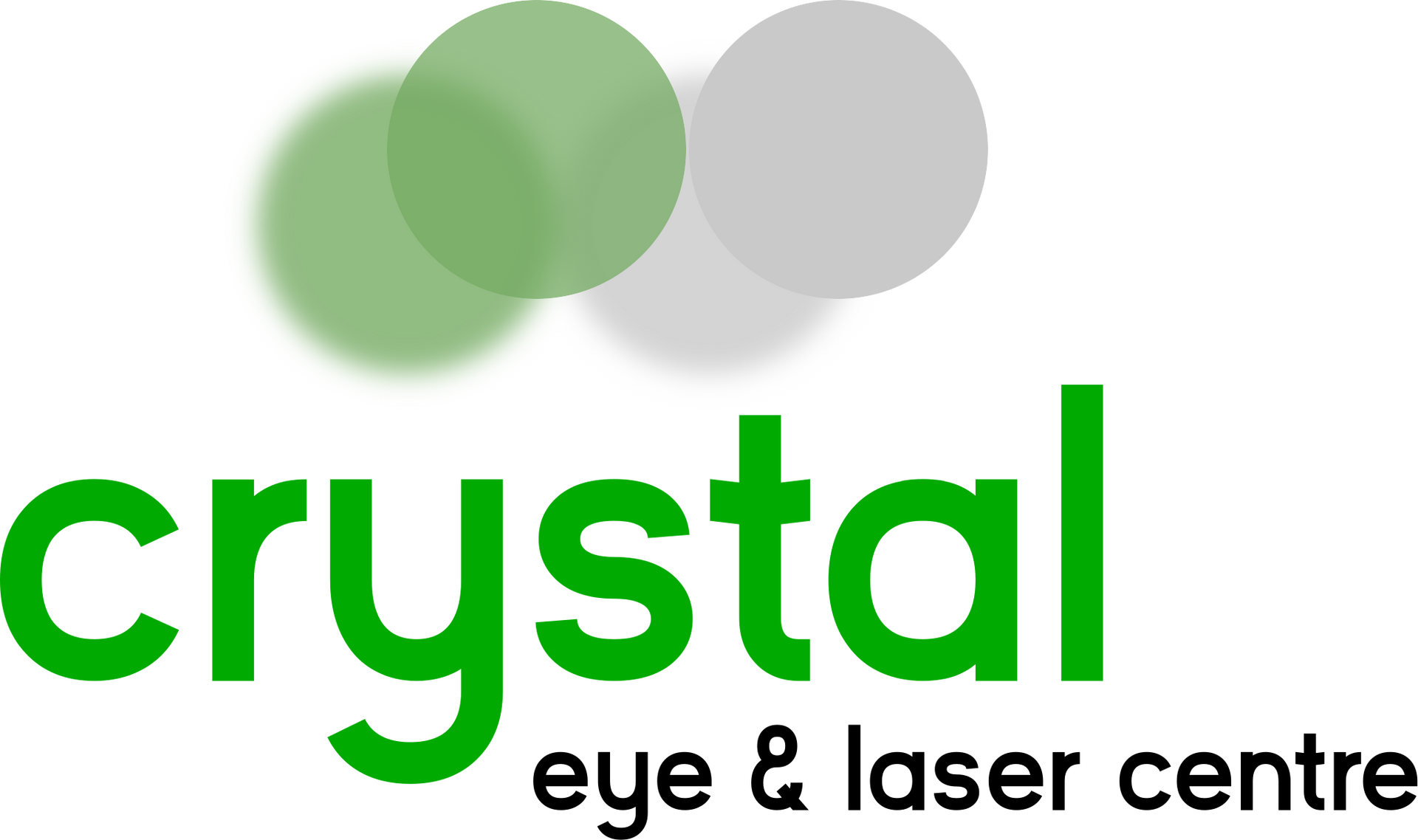What is PRK and how does it work?
In photorefractive keratectomy (PRK), instead of creating a flap, the surgeon gently removes the epithelium before reshaping the stromal surface directly with medical alcohol; meaning that healing takes a few days while the surface layer cells or epithelium grows back. Because of the slower recovery time of PRK, we normally use PRK if there is an associated medical reason why this method would be preferable for treating your spectacle error. PRK has confusingly been renamed by some as LASEK (laser in situ epithelial keratomileusis), TransPRK (transepithelial PRK), and ASA (advanced surface ablation). Essentially, they are variations on the same procedure: a surface procedure requiring the epithelium to be removed and then grow back over the laser reshaped surface. At Crystal Eye and Laser Centre we perform all versions of PRK that is suitable to a specific patient.
- PRK or Photorefractive Keratectomy, is a painless laser vision correction procedure utilising only one laser.
- PRK laser vision correction is completely painless as numbing drops are used to numb the eye’s surface.
- FIRSTLY, the surface layer cells are removed from the surface of the cornea either manually or by the laser. No flap is created
- SECONDLY, the cornea is then painlessly reshaped by an Excimer laser.
- At Crystal Eye and Laser Centre we have spared no expense by obtaining the World’s most advanced and accurate excimer laser, the Zeiss Mel 90 to deliver exceptionally accurate results reshaping the cornea during laser eye surgery.
- The cornea is covered by a contact lens following the PRK laser eye surgery.
- The contact lens stay in for approximately 5 days allowing the surface of the eye to painlessly heal.
- Full visual recovery can be expected between 10 - 14 days
PRK steps
Step 1: We remove the epithelial layers of the eye
Step 2:
We apply laser to the cornea to treat the spectacle error
Step 3: We apply a drug called Mitomycin-C to prevent corneal scarring
Step 4:
We apply a contact lens on the eye
Step 5:
We prescribe aftercare to ease possible mild discomfort
PRK laser eye surgery at a glance
01
Thin outer corneal layer (epithelium) is removed with an alcohol solution or a special brush, and underlying tissue is reshaped with an excimer laser.
02
Greater suitability, treatment option also for patients with thin corneas
03
Requires no flap – no risk of flap-related complications (e.g. flap detachment, flap displacement), lower rate of infection
04
Cost-effective, least expensive of all laser eye surgery procedures
05
Extended visual recovery period, often accompanied by some discomfort
05
Potential side effect is haze (milky or blurry vision)
05
Sounds and odours during surgery
The advantages of PRK Laser Eye Surgery
- PRK is extremely accurate as we use the world’s most advanced and accurate laser
to perform the procedure - Visual recovery is relatively quick once the surface layer has fully healed. Most patients can return to their normal activities within a week or two.
- The PRK procedure is completely painless
- The PRK procedure is extremely comfortable as there is no suction on the eye
- No flap is created on the surface of the eye allowing a more natural healing
- No incision is made at any stage of the PRK procedure- only remoulding of the cornea with the excimer laser
- No blades are used and the whole procedure is performed using LASER technology
- Almost 100% of patients achieve better than 20/20 vision if the eye has no other abnormalities in PRK surgery
- PRK can treat can treat a variety of errors including; nearsightedness, farsightedness and astigmatism
- PRK is suitable for patients with very thin corneas who would otherwise not be suitable candidates for LASIK or SMILE
- PRK can treat scars on the cornea which are contraindications in LASIK and SMILE laser eye surgery
- PRK can be used to treat irregularities on the cornea that LASIK and SMILE can’t do
FAQ
Frequently Asked Questions
If you are considering PRK laser eye surgery, you probably have many questions, especially seeing that there are so many options.
At Crystal Eye and Laser Centre we offer all forms of laser eye surgery.
Some of the most frequent ones are addressed here. This information is not intended to replace consultation with your eye surgeon.
Is PRK laser eye surgery right for me?
Eligibility for PRK laser eye surgery depends on many factors; mostly for patients who have thin corneas and who are not suitable for LASIK or SMILE laser eye surgery. Only your eye surgeon can determine whether PRK laser eye surgery or possibly another treatment option is best suited for you.
What advantages does PRK laser eye surgery offer?
PRK laser eye surgery is suitable for patients with thin corneas or who have corneal scars who would otherwise not be suitable for LASIK or SMILE laser eye surgery. It requires no flap so flap complications are avoided. It is also the most economical laser eye surgery procedure to undergo
Is it safe?
Complications after PRK are rare, but cannot be completely ruled out. As with all medical procedures, there is always a risk of possible side effects. Your eye doctor will discuss these with you.
How do I prepare?
If you wear contact lenses, most surgeons recommend switching to glasses a few weeks before surgery. You are advised not to apply makeup, lotions or perfume the day you have surgery. Also, it is suggested that you arrange to have someone bring you home afterward.
How long does the procedure take?
The treatment procedure itself only takes less than 10 minutes for both eyes.
What happens after surgery?
A protective bandage or eye shield is placed over the eye to avoid rubbing it. Contact lenses are placed on the eye to protect the corneas. Eye drops and possibly other medication may be prescribed to prevent infection and aid the healing process. A post-op examination the next day is customary, as are further examinations for the following weeks or months.
When can I return to my normal activities?
You will be able to resume most of your normal activities and return to work within the second week following the PRK procedure.
How long is the recovery time?
Complete visual recovery usually takes two to three weeks.
What does it cost?
The cost of PRK at Crystal Eye and Laser Centre is $6900. Most insurance companies do not cover the procedure costs but certain health insurers cover the whole cost or part of the cost on certain plans.
Own Your Vision in 3 Easy Steps

1. Reach Out
It's super easy. Drop us a line by phone, email, or via the contact form and let's set up a time to get together.
2. Let's Meet
Let's get together so we can learn more about each other. Once we learn about your personality, lifestyle and hobbies we will come up with an individual treatment plan tailored to you and your needs.

3. Enjoy Crystal Clear Vision!
Before you know it you'll be enjoying a life free from the hassle of glasses or contact lenses!


